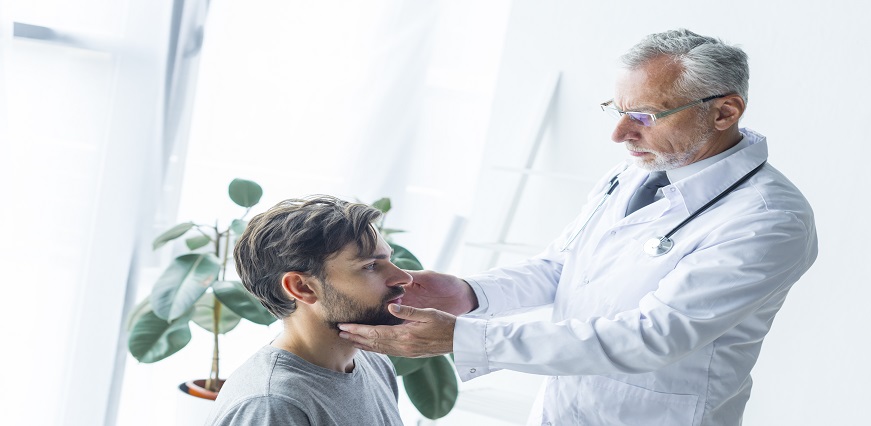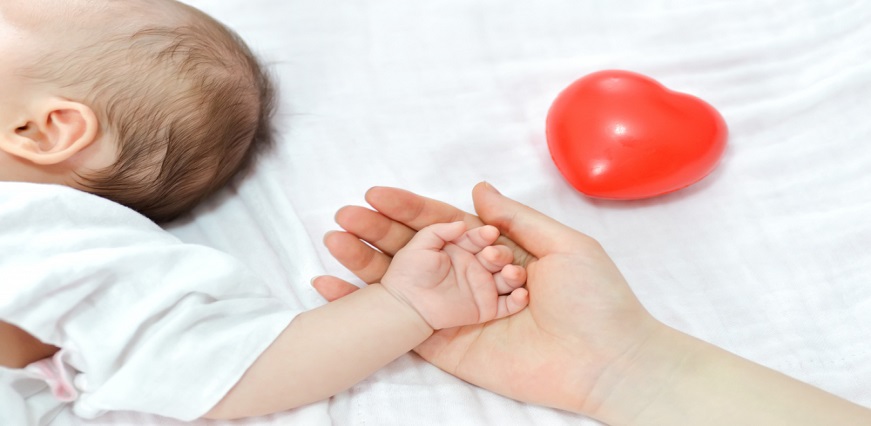





No lab centers are available in this city

Hodgkin's Lymphoma, also called Hodgkin's Disease, is the type of lymphoma where Hodgkin's cells start in the lymphatic system. The lymphatic system is made up of organs, nodes, and vessels throughout your body.
Normally, your lymphatic system helps you immune system fight infections and get rid of waste. In fact, one type of white blood cell within your lymphatic system is called a lymphocyte, and these cells can help protect you from germs and infections.
Hodgkin's Lymphoma, which originates from a type of lymphocyte called B lymphocytes, produces proteins called antibodies which latch onto foreign invaders and tell your immune system to destroy them.
Lymphocytes grow abnormally & push out healthy white blood cells from the body in people with Hodgkin's lymphoma. They are difficult to fight and can lead to a general inability for the body to fight infection as the disease progresses.
If you or someone you know is suffering from Hodgkin's Lymphoma, it's important to understand what this disease is and the symptoms it could produce. This way, you'll be able to seek treatment to put a stop to the tumor growth.
Hodgkin lymphoma, also known as Hodgkin's disease, is a type of lymphoma, meaning cancer of the lymphatic system.
The lymphatic system consists of nodes (knots of tissue) that are connected through vessels and drain fluid and waste products from the body. Lymph nodes act as tiny filters and quickly filter out foreign cells or organisms.
The lymphatic system helps your body fight off bacterial, viral, and fungal infections. When the lymphatic system is fighting an active infection, you may notice swollen lymph nodes and painful tenderness in the area around the infection. This is normal for your body's reaction to an infection.
When the lymph nodes cells or lymphocytes start to multiply uncontrollably, neoplasm cells begin to form. These malignant cells can invade other tissues throughout your body.
Hodgkin lymphoma and non-Hodgkin lymphoma are the two forms of lymphoma. They're classified by certain traits about the cancer cells.
Hodgkin’s disease is caused by a build-up of abnormal cells in the lymphatic system. The lymphatic system helps to fight infection and disease, and is made up of a network of vessels and nodes that transport lymph fluid around the body. In Hodgkin’s disease, the abnormal cells grow in the lymph nodes and other parts of the lymphatic system, such as the spleen or bone marrow. These cells then crowd out the healthy cells, making it difficult for the lymphatic system to work properly.
The exact cause of Hodgkin’s disease is unknown, but there are certain risk factors that may increase your chance of developing the condition. These include:
There are a few different symptoms of Hodgkin’s disease, and they can vary in severity. The most common symptom is enlarged lymph nodes, which can be felt as lumps under the skin. Other symptoms include fever, night sweats, weight loss, and fatigue. In some cases, patients may also experience itching or pain in the affected lymph nodes. If the disease progresses, it can lead to more serious symptoms like difficulty breathing, chest pain, or an enlarged spleen.
There are two types of treatment for Hodgkin’s disease: radiation therapy and chemotherapy. High-energy beams, like X-rays, are used in radiation therapy to kill cancer cells. Drugs are used in chemotherapy to kill cancer cells.
Radiation therapy is the most common type of treatment for Hodgkin’s disease. It can be given in two ways:
Chemotherapy is often used along with radiation therapy to treat Hodgkin’s disease. There are two ways to administer chemotherapy:
There are four main stages of Hodgkin’s disease:
The most common side effect of treatment for Hodgkin’s disease is fatigue. The cancer itself or the therapy may be to blame for this. Fatigue can range from mild to severe and can last for weeks or months after treatment. Other possible side effects include:
Depending on the type of treatment you receive, other side effects may occur. Be sure to talk to your doctor about all the possible side effects of your treatment.
Hodgkin's disease is a serious condition that can be fatal if left untreated. However, with early diagnosis and treatment, the prognosis for Hodgkin's disease is generally good. If you or someone you know has symptoms of Hodgkin's disease, it is important to see a doctor right away so that the condition can be diagnosed and treated as soon as possible.





 Allergy Test
Allergy Test
 Anemia Test
Anemia Test
 Auto immune
Auto immune
 Blood disorder
Blood disorder
 Bone and Joint
Bone and Joint
 Cancer Test
Cancer Test
 Cardiology Test
Cardiology Test
 Covid Recovery
Covid Recovery
 Dengue Test
Dengue Test
 Depression
Depression
 Diabetes Test
Diabetes Test
 Fatigue
Fatigue
 Fever Test
Fever Test
 Full body
Full body
 Gastro Test
Gastro Test
 Gastrointestinal
Gastrointestinal
 Gynaecology Test
Gynaecology Test
 Heart Test
Heart Test
 HIV Test
HIV Test
 Hormone Test
Hormone Test
 Hypertension
Hypertension
 Immunity Test
Immunity Test
 Infectious Disease
Infectious Disease
 Infertility Test
Infertility Test
 Influenza Test
Influenza Test
 Iron Test
Iron Test
 Kidney Test
Kidney Test
 Liver Test
Liver Test
 Lung Test
Lung Test
 Nephrology
Nephrology
 Obesity
Obesity
 Orthopedics Test
Orthopedics Test
 Physician
Physician
 Pollution Health Checkup
Pollution Health Checkup
 Pregnancy Test
Pregnancy Test
 Prostate Test
Prostate Test
 Senior Citizen Test
Senior Citizen Test
 STD Test
STD Test
 Thyroid Test
Thyroid Test
 Tuberculosis Test
Tuberculosis Test
 Vitamin Test
Vitamin Test
 Women Health Test
Women Health Test
Sign up takes less than 60 secs and gives you access to your offers, orders and lab tests.
Looks like you are not registered with us. Please Sign up to proceed
OTP will be sent to this number by SMS
We have successfully received your details. One of the agents will call you back soon.
 To reach our help desk call 9213188888
To reach our help desk call 9213188888
No Lab Centers are available in this city
Looks like you are not registered with us. Please Sign up to proceed
OTP will be sent to this number by SMS
Not Registered Yet? Signup now.Looks like you are not registered with us. Please Sign up to proceed





 7982100200
7982100200.png)